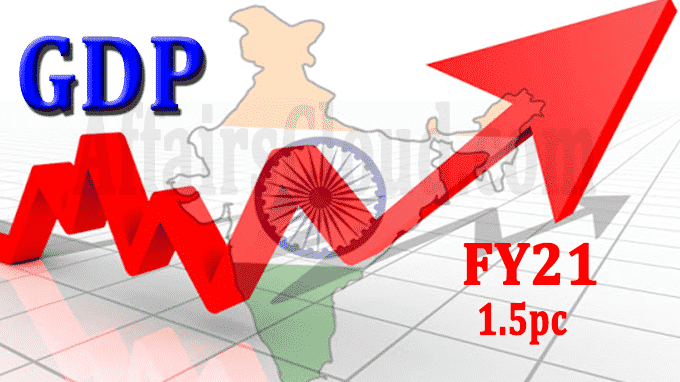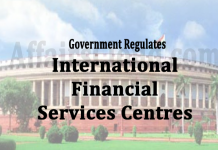On April 23, 2020 The Confederation of Indian Industry (CII) in a paper- A plan for economic recovery has stated that India’s Gross Domestic Product (GDP) growth is likely to grow at 1.5% in the current Financial Year (FY21) post the lockdown period & also has suggested urgent fiscal interventions. Growth expectation under other scenarios
Growth expectation under other scenarios
- In case of baseline scenario, GDP is expected to grow at 0.6% on an annual basis as the economic activity is expected to remain in constraint due to the continuing restrictions on the free movement of goods and people beyond the lockdown period.
- This will lead to disruption in supply chains, slow pick-up in investment activity, labour shortages in the short-run and muted consumption demand on account of reduced household incomes.
- This will lead to disruption in supply chains, slow take on investment activities, short-term labor shortages and the need for disabled consumption due to reduced household income.
- In case of a more prolonged outbreak, GDP will decline by -0.9% if restrictions in hot spots continue and newer spots get added to the list which lead to periodic stop & start in economic activity.
Suggested urgent fiscal interventions
i.Should include cash transfers of Rs 2 lakh crore to Jan Dhan-Aadhaar-Mobile (JAM) account holders in addition to Rs 1.7 lakh already announced.
ii.To provide additional working capital limits to banks, equivalent to the April-June wage bill of the borrowers, backed by a government guarantee, at 4-5% interest.
iii.The creation of fund or Special Purpose Vehicle (SPV) with a corpus of Rs 1.5 lakh crore which will subscribe to Non- Convertible Debentures (NCDs)/Bonds of A rated corporates and above.
iv.The fund can be raised by a corpus contribute by the government of Rs 10,000-20,000 crore, with further investments from banks and financial institutions such as Life Insurance Corporation (LIC), Power Finance Corporation (PFC), Employees’ Provident Fund Organisation (EPF) among others, this will limit Government exposure while providing adequate liquidity to industry.
v.A credit protection scheme for Micro, Small & Medium Enterprises (MSMEs), where If the borrower defaults, RBI should buy the loan and repay the bank upto 75-80% of the loan, which limits the risk to the lender.
vi.Small Industries Development Bank of India (SIDBI) can provide the guarantee for loans to industry and trade while National Bank for Agriculture and Rural Development (NABARD) can provide the guarantee for loans to agro-processing sectors.
Key Points
- In considering the extent of the damage to the economy from the disruption to business, the GDP growth in FY21 is likely to be the lowest in many decades.
- Without an increase in government spending in the near term for economic recovery, government’s revenue will decline and high deficits will be a problem in future.
- As the capacity utilization levels may be minimum, any significant recovery in investment activities is unlikely. Consumption demand will be sluggish as people’s incomes are affected.
- The economies across the world will continue to struggle with the pandemic & global trade may decline by 13 to 32% in 2020, as estimated by the World Trade Organisation(WTO) where government intervention becomes critical not only to sustain the economy but also to prevent any humanitarian crisis.
About CII:
Headquarters– New Delhi, India
President– Vikram S. Kirloskar




